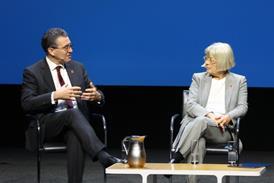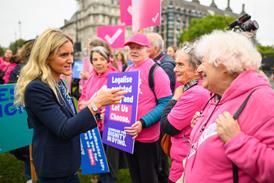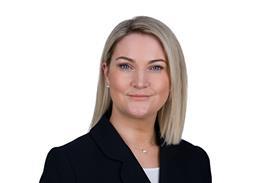The conker murder was a horrific crime. Steven Grisales was murdered in Edmonton after remonstrating with a gang of boys who were throwing conkers at him. His murderer was just 15, had a long criminal record and was electronically tagged when he committed the crime. When he was first sentenced, his identity was not revealed. But last week, when the sentence was referred to the Court of Appeal by the attorney general, the judges decided to reveal the identity of the ‘conker killer’.
Lady Justice Hallett said: ‘We have come down on the side of publication of the offender’s identity given the strong public interest in knowing his identity given the nature of the offence.’ Apparently the media had requested his identity be revealed. But I won’t repeat his identity in this article, or the identity of any other child in trouble with the law. Because there is no clear evidence that identifying children benefits the public and identification can do huge damage to the children concerned.
The UN Convention on the Rights of the Child, under which all those under 18 are children, says: ‘Every child alleged as or accused of having infringed the penal law has at least the following guarantee[s]: To have his or her privacy fully respected at all stages of the proceedings.’ We signed the convention and its provisions are wise. A child who commits a crime (however heinous) is immature and needs the best chance possible of rehabilitation. Naming and shaming makes a child less likely to be able to turn their life around. Look at the killers of James Bulger. Their lives have been blighted by vilification in the media. As adults they have had to be given new identities and, even then, they are haunted by the possibility someone might find them out. They committed a terrible crime but they have themselves become victims.
No one knows if more children who commit crimes are being identified by the courts, but I have read many news stories in the last year in which the names and faces of children have been revealed. In July I read the name and saw the photo of a 16-year-old boy who had violently attacked a girl. He was a looked-after child who had apparently been abused himself. His face is even now plastered over many websites. The chances of helping such a damaged boy from reoffending were already slim. They are even slimmer now his terrible crime is immortalised in cyberspace. The risk of naming child offenders is not just to them. The brothers, sisters and parents of the child can be vilified and threatened too.
I understand the desire of the media to identify culprits. It makes for better copy. I understand that perpetrators of terrible crimes need to be convicted and that the public should be protected from them. I understand the need to investigate why a looked-after child felt the need to abuse another child, and why a 15-year-old who had been committing street crimes since the age of 12, did not get the help he needed to turn away from violent crime. But I am still not clear how the public benefits from knowing the name and seeing the photo of a teenager who has been imprisoned. Members of the public are not going to meet these children on the street. The family and victims of the children already know their identity.
Thank goodness the default in most criminal cases involving juveniles is that their identity is protected. The Crown Prosecution Service, the media or the court themselves can ask for restrictions on identification to be lifted. The CPS is currently updating its guidance and is monitoring how often their prosecutors are the ones seeking the lifting. But I suspect it is most often the media who ask for reporting restrictions to be lifted. What is surprising is that no one appears to have challenged such a decision on the basis of its incompatability with international law. The UN Convention on the Rights of the Child is not incorporated in English law, but our courts should abide by it. So maybe the only way of stemming the trend for naming and shaming is to hope for a judicial review.
Penelope Gibbs is chair of the Standing Committee for Youth Justice and director of Transform Justice



















![Eleanor Clarke - 029[8]](https://d1d8vslyhr7rdg.cloudfront.net/Pictures/274x183/1/5/1/120151_eleanorclarke0298_527574_crop.jpg)





No comments yet